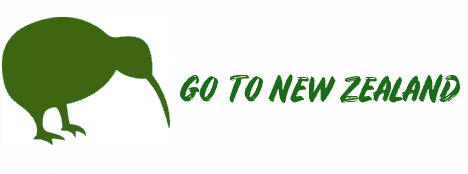Past...
Twenty years ago, Te Reo Maori (the Maori language) was a language at risk with little chance of recovery. Increasingly, it was being spoken mostly by the kaumatua (elders) and in some of the universities.
...and present
Today, the language still has a fragile hold in Maori society as a whole, but every year now there are several thousand young children entering the education system already fluent in the language and tikanga (customs) of their ancestors. In their hands will rest the future of Te Reo Maori.
The Legends and History of the Maori People
The Legends and History of the Maori People of New Zealand
The term “Maori” refers the native Polynesian peoples of New Zealand. They are, hence, related to the native peoples of Samoa, Hawaii and the Polynesian Islands of the South Pacific. They constitute about 10% of the total population of New Zealand. Their mother tongue belies their Polynesian origins that are similar to other Polynesian languages such as Hawaiian and Tahitian. The ancestors of the Maori are widely believed to have arrived in New Zealand sometime before the 13th century after Christ.
First contact was made with the Maori by the outside world by able Dutch navigator and explorer Abel Tasman. Needless to say, the first contact wasn’t a friendly one. But it was the exploits of British adventurer Captain James Cook which made peace with the Maori tribes ensuring that European visits in the 1800s were without incident.
With the arrival of the Europeans into New Zealand, the impact on the native Maori population was an adverse one with disease ravaging the native populations drastically.
The Europeans gained a firm foothold in New Zealand only with the signing of the famous Treaty of Waitangi. In return for British sovereignty over New Zealand, the Maoris were granted citizenship of the British Isles and land rights.
However, the terms of the treaty as they relate to land rights are currently under dispute and the New Zealand is putting in a genuine effort to redress the wrongs of Maori lands that were seized illegally. This echoes the Mabo decision across the Tasman straits.
In modern times, the Maori population has doubled its numbers since the first arrival of the Europeans. They prefer to live in the warmer climate of the North Island but they are found all over New Zealand.
The Maori are a people who are true survivors and they have shown resilience in the face of adversity. They live in a modern country, but their traditions are centuries old and their survival enriches the cultural fabric of the country that is New Zealand.
The Origins of the Maori
The Origins of the Maori people of New Zealand
The legends of the Maori have it that their ancestors came by sea from a land called “Hawaiki”. The Maoris first arrived in New Zealand around a thousand years ago to a land that was shaped by volcanism and hid its highest mountain peaks in majestic snow. The Maoris called this beautiful land “Aotearoa”, which means the Land of the Long White Clouds.
The Maoris have many ideas about their place of origin. They commonly agree that “Hawaiki” may be referring to Hawaii or to a place thereabouts. Most scholars of Maori culture agree that the ancestors of the Maori came via South East Asia from somewhere in China.
Others argue that the Land of the Long White Clouds may have been discovered by accident when they were blown of their voyage routes. However, there is compelling evidence to disprove otherwise this notion since the Maori possessed ancient knowledge of navigation.
The Maori Culture and Traditions
New Zealand’s indigenous people are the Maori, a race descendent from Polynesia who has inhabited the country for an estimate 700 years. New Zealand has a proud and prevalent indigenous culture that is evident in everyday life. You may notice that your universities motto is in the Maori language – this is just one example of the fusion of Maori and Pakeha (white people) cultures that comprises Kiwi society.
The most well known Maori tradition carried out by Pakeha’s today is the haka. The haka is a group dance performed to intimidate rivals and is often used by the New Zealand football team just before a game. In official ceremonies, the New Zealand national anthem, God Defend New Zealand, is often sung in Maori and English. Pakeha artists and authors often use Maori themes and motifs when producing their works. Other examples of the Maori culture can be found in song, dance, art, food and many other things in New Zealand culture.
The Maori culture has a long and fascinating history. If you have some spare time, it would be worth your while undertaking a Maori studies course offered at many universities and polytechnics around the nation. At the very least, you should pick up some of the language – Kiwi’s frequently use Maori words and phrases in every day conversation.
New Zealand’s culture is a harmonious blend of the native Maori and the adopted Western cultures. To truly experience Kiwi culture, one must immerse themselves in its indigenous culture. Further exploration of the indigenous Maori culture is an interesting and rewarding experience.
Maori Language New Zealand
AUT University has unveiled the Te Reo Maori programs for that can be studied under three levels: beginner, intermediate, and advanced levels. The tutorial is interspersed with updated technological illustrations where fun and entertainment rule the roost. To know about the New Zealand indigenous language and culture learning program, inform us.
